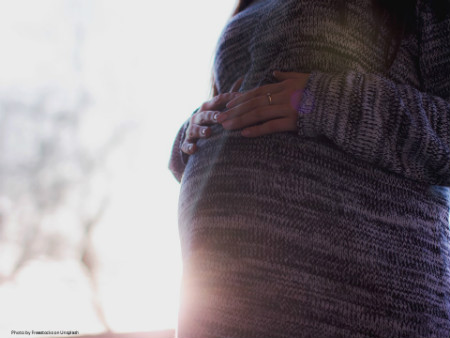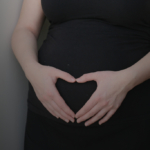A significant number of women experience anxiety symptoms during pregnancy, with nearly 10% of women meeting criteria for generalized anxiety disorder. Even more women suffer from milder anxiety symptoms or what some refer to as “stress” during pregnancy. Of concern is the data suggesting that women who experience anxiety during pregnancy have worse outcomes, including higher rates of preterm birth and low birth weight.
There is a small but growing body of literature focused on various types of relaxation practices and their effects on pregnant women and their babies. Although many of these studies are of smaller sample size or have other limitations (for example, comparing different paradigms for relaxation, lack of adequate controls or differences in the gestational time periods observed), they seem to point towards benefits of relaxation for maternal health during pregnancy, better outcomes overall, and positive effects for the fetus.
A meta-analysis published in 2012 looked at the effects of relaxation on pregnant women’s emotions, pregnancy and fetal outcomes, as well as maternal physiological markers and endocrine function. This study helps us to clarify what techniques might be useful to use in pregnancy and how we can begin to integrate these practices into our treatment of anxiety and stress during pregnancy.
This meta-analysis used PubMed and searched the years 1980-2011 using the key words: well being, maternal stress, relaxation techniques, pregnancy, fetal neurobehavior, fetal heart rate, and neonatal behavior. 58 articles were found, and 21 remained after eligibility criteria of the studies were applied. Results of the data reviewed can be accessed here.
It has been shown in multiple studies, nine of which were reviewed in this article, that anxiety, depression and perceived stress levels decrease with relaxation practices, including both active and passive exercises, applied relaxation sessions or mindfulness- based interventions, are administered. Typically the effects occur over a 7-8 week period. Benefits of these exercises to maternal well-being should not be over looked. It would be useful to see how these practices affect pregnant women who are in distress versus healthier pregnant subjects.
Multiple studies have looked at the effects of relaxation on maternal heart rate (HR) and blood pressure (BP), which are used as measures of maternal stress levels. Often active relaxation, meaning self-stimulated imagery, muscle relaxation, yoga therapy, or guided meditation brought greater improvements in HR and BP, as compared to passive techniques like sitting quietly, but both showed improvements. Not only would these interventions help to decrease stress levels in the mother, it is well known that healthful HR and BP in mothers positively effects fetal development and pregnancy and obstetrical outcomes.
With stress, anxiety and depression, there are alterations in maternal hormonal (specifically the hypothalamic-pituitary-adrenal axis). activity These alterations in neuroendocrine axis may negatively impact obstetric and neonatal outcomes and well as the formation of fetal axis an causing long-standing effects on stress modulation and emotional regulation of the children born to mothers experiencing stress during pregnancy. This meta-analysis demonstrated that relaxation interventions, especially massage therapies, progressive muscle relaxation (PMR), and other types of active relaxation positively affect mothers’ levels of cortisol, norepinephrine, serotonin and dopamine, resulting in both short- and long-term benefits for the mother and her child.
Four studies looked at the effects of relaxation on fetal movement, intrauterine growth retardation (IUGR) and fetal heart rate (FHR) variability. Decreased FHR variability and higher FHR are observed when there is fetal stress. In one study, FHR variability was improved by relaxation, including guided imagery (GI) and PMR both during and after exercises, and guided imagery GI resulted in more fetal movements. Studies looking at massage and its effects on IUGR and fetal movement were less clear.
Ten studies assessed how relaxation practices affect labor, mode of delivery, birth weight, gestational age, and physical condition of the newborn (as assessed using Apgar scores). Overall, applied relaxation techniques were shown to decrease the risk of low birth weight, and certain yoga practices were shown to decrease the risk of preterm delivery and prematurity, as well as increase birth weight. In one study, women with early contractions and premature cervical changes had longer gestations and increased birth weights when they did relaxation exercises, as compared to controls and non-compliers. Conflicting evidence was provided in terms of the effects of relaxation on the duration of labor; however, one study showed increased maternal comfort and decreased reports of pain when mothers used a combination of biofeedback and relaxation techniques in preparation for labor and delivery.
Although there were limitations in many of these studies, and focused research on the benefits of cognitive behavioral therapy (CBT) and relaxation techniques on emotional well-being and psychological state would be extremely useful in developing clear practice guidelines, the suggestions for clinical practice are pertinent. These techniques do not appear to have adverse effects when administered during pregnancy, and theyprovide objective benefits during pregnancy for mothers and fetuses, obstetrical and neonatal outcomes and long-term modulation of stress.
A summary of suggestions for clinical practice from this article are:
- Provide relaxation training: This can consist of guided imagery, mindfulness exercises or more in depth training as provided at the Benson Henry Institute, MBSR or other such groups.
- Provide accurate information on stress management during pregnancy.
- Cognitive behavioral therapy (10-20 sessions).
- Practice positive activities that support relaxation and reduce stressful activities.
- Consider support and training groups focusing on attachment and bonding of mother and child, and/or groups to address anxiety, depression or other stressors.
- Use social support systems when possible.
(The article includes more detailed suggestions for clinical practice.)
Given the data supporting the positive effects or relaxation techniques for both the mother and her child, health care providers should not overlook relaxation techniques to prevent or manage stress and anxiety during in women who are pregnant or planning to conceive. Women can also be more proactive in seeking out safe and effective relaxation techniques to employ during pregnancy with little risk and demonstrable benefit.
Katherine Kessler, D.O.
Fink NS, Urech C, Cavelti M, Alder J. Relaxation During Pregnancy: What are the Benefits for Mother, Fetus, and the Newborn? A Systematic Review of the Literature. J Perinat Neonatal Nurs. 2012 Oct-Dec; 26(4):296-306.








Got some useful information about relaxation during pregnancy. However now a day’s people talk a lot about self-relaxation through hypnotism. I am not sure if it really works though.
Thanks for the informative post anyways.